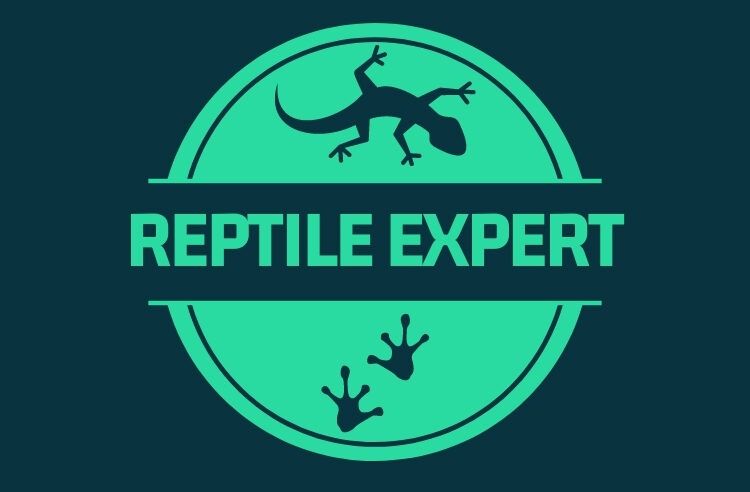Monitors are definitely not for the beginner reptile enthusiast and certainly not recommended as a casual pet. While they are fascinating creatures that are very intelligent, inquisitive, active and beautiful to look at, they do require specialist reptile knowledge and considerable commitment to keep in good health. If you are thinking of getting a monitor lizard then make sure you do much more than just read this article – research the species and its needs and correct husbandry before choosing one as a pet.
Monitor Misinformation
Unfortunately, there is a lot of wrong information given about monitors, especially by pet stores keen on a sale and not really caring about the welfare of the animal (or its customers!). People are often told that monitors will not outgrow a small cage, will only eat crickets, will not need heat above room temperature and will be a docile and tame pet. All this could not be further from the truth.
Although they might start out as cute hatchlings, monitors grow at an incredible rate, easily reaching over 4 feet by the end of their first year and much more as adults. Furthermore, they can be notoriously difficult to tame, no matter how much time and effort is spent and can become dangerously aggressive as adults – their tails can be used as a painful whip and their powerful jaws, teeth and claws can cause serious injuries (to both humans and surroundings) as well as great pain. In addition, their special needs means that considerable money must be spent on their housing and feeding requirements.
There are dozens of species of monitors – the most common kept in captivity are probably the Savannah monitor and the Nile monitor. Monitors can vary in size from the smallest at 23cm to the huge Komodo dragon which can easily kill a goat. Most will have a lifespan of 10-12 years. Ideally, purchase a captive bred juvenile as not only will it be easier to tame and handle, it will also be less stressed and parasite-ridden than a wild-caught specimen.
Monitor Care
One of the key requirements for a pet monitor is a secure enclosure as they are fantastic escape artists, partly because they are one of the most intelligent of reptiles.
Even for the popular medium-sized Savannah monitor, the enclosure needs to be very large. If you have a juvenile, you can start with a large tank (at least 55 gallons) but as monitors grow so fast that you will have to replace it soon, you might as well start with the final adult-sized enclosure. This needs to be at least twice as long as the monitor and as wide as the monitor’s length. It also needs to be as tall as possible, to lower the risk of the monitor climbing out. Screen walls are not recommended as these will soon be shredded by powerful claws; solid side walls are best. In addition, the entire enclosure itself must be solidly built and withstand force as monitors have been known to literally break out of their enclosures.
As monitors tend to be “messy” lizards due to frequent eating and defecating, it is best to use a substrate that is easily cleaned or disposed of and replaced – something like indoor/outdoor carpeting or butcher paper. Gravel is sometimes recommended and this is fine as long as your monitor is not ingesting any by mistake when they eat.
Temperature
Like all reptiles, monitors need a temperature gradient set up in their enclosure, with at least one basking spot that is slightly warmer (e.g. 95-100 F). This can be achieved by a combination of undertank heating and an incandescent basking light source over one side of the tank. In addition, monitors will need a full spectrum UV light source for at least 10-12 hours daily.
Monitors like to have places to hide and at least two should be provided, one at each end of the temperature gradient. For juveniles, cardboard boxes appropriate to their size will suffice but adults might fare better with custom-built wooden boxes. You can also include some rocks and other features but in general, it is not really worth investing much in features for the enclosure as monitors are very destructive.
Food and Eating
Unlike some other lizards, monitors are not fussy eaters and in fact, will easily become obese if over-fed. As obesity can lead to serious health problems, keep an eye on your monitor’s diet and ration sizes carefully.
Juveniles are usually fed on a mixture of live insects (e.g. gut-loaded crickets and earthworms) as well as pre-killed pinkie mice. Adults will graduate to adult mice and other small rodents. Make sure these are no bigger than the width of the monitor’s head otherwise they will be too large and cause regurgitation. Juveniles can be fed every 2-3 days and adults are usually fed twice a week. Remember that as obesity is so common in these lizards, keep a constant eye on body condition and adjust meal sizes accordingly. And remember, always use tongs when offering pre-killed prey! Don’t forget also to always have fresh water available in a large, shallow water dish (make sure the dish is quite sturdy) big enough for the monitor to submerge its body in – although this will have to be cleaned and changed regularly as unfortunately, monitors like many reptiles, tend to defecate in their water.
Last Note…
Savannah monitors, unlike many other species, can actually become quite tame they are handled often and in the right way, from a young age. This could account in part for their popularity and why perhaps they make the most rewarding pet.
